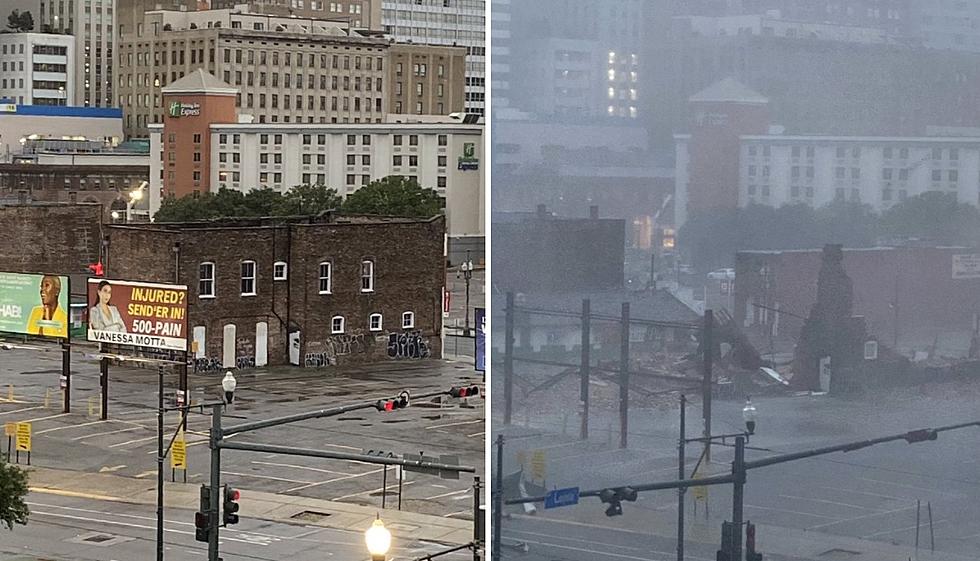
Entire Buildings Destroyed, Rooftops Ripped Off as Hurricane Ida Rips Through New Orleans
Hurricane Ida has not been kind to New Orleans as the city has already seen its fair share of significant damage from the storm.
Ida hit New Orleans on the anniversary of Hurricane Katrina, and it seems as if she's doing her best to leave her mark on the Crescent City. While Ida is still sitting over the New Orleans area with hurricane-force winds and rain, there are a few indicators that NOLA has definitely felt the impact of the storm that hit Louisiana as a Cat 4.
For one, the entire city of New Orleans is completely without power.
Video on Twitter shows what looks like parts of a rooftop ripped off of Ochsner in New Orleans.
Speaking of rooftops, WGNO reporter Chris Welty shared an image that showed their roof opened up as well.
Another look at WGNO studies shows that the show is still going on, despite water literally pouring into their studios.
The New Orleans Fire Department shared an image of a home that reportedly collapsed with a male victim inside.
Perhaps the most harrowing images came from Joel Franco on Twitter as he shared a building compltely wiped out in the CBD, not far from Walk-On's about a block from the Caesar's Superdome.
According to Twitter user Gordon Russell, the building was one of the "most important remaining jazz history sites" in NOLA, known as a "second home" to legendary jazz icon Louis Armstrong.
In some videos, the visuals we saw of Hurricane Ida in New Orleans looked like literal CGI.
Oh, it should be noted that with power outages, there are also complications with sewage and water pumping stations around New Orleans as well.
To see more images of storm damage from Hurricane Ida throughout south Louisiana, check this collection of photos and videos here, and say an extra prayer for our neighbors as night falls in the wake of the storm.



![Why It’s Too Dangerous To Visit Iowa’s Largest Cave [VIDEO]](http://townsquare.media/site/675/files/2024/02/attachment-cave-3.jpg?w=980&q=75)
